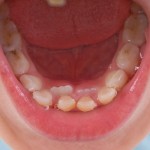
The use of cavity linings following the removal of caries has been recommended for decades. The use of cavity linings is considered to reduce the number of viable bacteria remaining close to the pulp, to induce development of reactionary dentine, to remineralise possibly remaining demineralised hard tissues, to isolate the pulp against thermal or electric conduction, and to protect pulpal cells against chemicals released from adhesives. The aim of this review was to assess the benefits and harms of cavity lining.
Methods
Searches were conducted in the Embase, Medline, Cochrane Central, Biomed Central and Open Grey (www.opengrey.eu) databases. Two reviewers independently abstracted data and assessed risk of bias using the Cochrane risk of bias tool. Randomised controlled trials (RCTs) involving patients with primary caries lesions receiving operative treatment involving caries removal and restoration, with minimum two treatment groups comparing different cavity treatments before restoration (no lining versus lining) with a minimum follow up of 1 year were considered. Conventional meta-analysis was performed using random-effects models.
Results
- 3 trials involving 89 patients (130 teeth/lesions) were included.
- All 3 studies were conducted in Brazil and involved primary teeth and had high risk of bias.
- All trials compared no lining versus calcium hydroxide lining after selective caries removal followed by adhesive restoration.
- Follow-up period was 36 to 53 months.
- Restoring the cavity without lining did not significantly affect the risk of failure;
- Intention-to-treat relative risk (RR) = 0.71 (95%CI; 0.49-1.04),
- Per-protocol RR = 0.52 (95%CI; 0.24-1.10).
- The quality of evidence was very low.
Conclusions
The authors concluded:
current evidence does not support strong recommendations to use or not to use liners after caries removal and before restoring cavities. Our findings are restricted to primary teeth after selective excavation, with only one liner (calcium hydroxide) being used for comparison. More well designed and reported randomised trials need to be conducted assessing the benefits and harms of various lining materials versus placebo interventions in primary and permanent teeth.
Comments
While this review has adopted a sound methodological approach, the available evidence to address the question is limited to just 3 small low quality trials that have only assessed the use of a single lining material (calcium hydroxide). As the authors note more research is needed to assess the benefits and harms of this and other lining materials.
Links
Schwendicke F, Göstemeyer G, Gluud C. Cavity lining after excavating caries lesions: Meta-analysis and trial sequential analysis of randomized clinical trials. J Dent. 2015 Aug 8. pii: S0300-5712(15)30024-5. doi: 10.1016/j.jdent.2015.07.017. [Epub ahead of print] Review. PubMed PMID: 26265350.

Cavity lining after excavating caries lesions http://t.co/KfngynCGYm
Restoration without lining did not affect the risk of failure http://t.co/KfngynCGYm
Questioning the value of indirect pulp caps.
https://t.co/bdCyfKUMyK
Limited evidence for use of cavity lining after caries removal http://t.co/KfngynCGYm
Is use of cavity lining necessary after caries removal? http://t.co/KfngynCGYm
Don’t miss – Cavity lining after excavating caries lesions http://t.co/KfngynCGYm